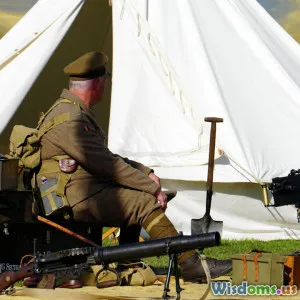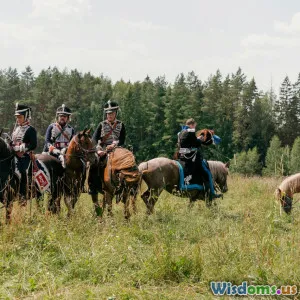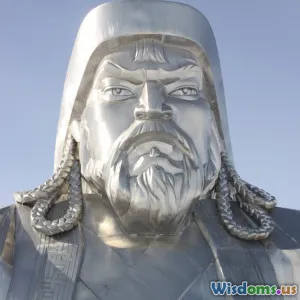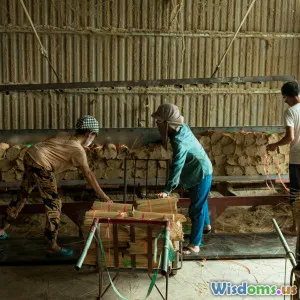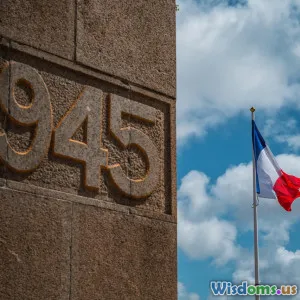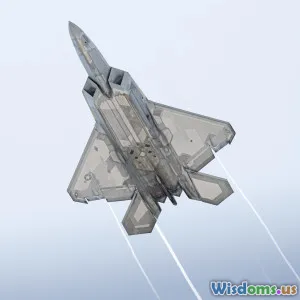
The Hidden Impact of Gunpowder on European Power Shifts
10 min read Explore how gunpowder secretly reshaped European power dynamics, influencing warfare, state control, and empires’ rise and fall. (0 Reviews)
The Hidden Impact of Gunpowder on European Power Shifts
Gunpowder is often celebrated as one of the most significant technological revolutions in history, famously credited for transforming warfare and political landscapes. Yet, beneath its obvious usage as explosive weaponry lies a series of subtler but monumental shifts in power structures throughout Europe. From medieval castles falling to cannon fire to centralized monarchies overriding feudal lords, the introduction and evolution of gunpowder technology reshaped the continent in ways still reverberating today. This article delves deep into the hidden impact of gunpowder on European power dynamics, charting its influence across military innovations, political centralization, and the birth of modern states.
Dawn of Gunpowder in Europe: A Game Changer
Gunpowder was invented in China around the 9th century, primarily for fireworks and early incendiary devices. Its introduction to Europe — believed to have arrived in the 13th century through contacts during the Mongol invasions or the Silk Road — ushered in an era that would rewrite warfare tactics. Early Europeans initially used it for blunt force rather than precision; the first devices were rudimentary cannons and hand-held firearms, often unreliable yet dramatically easier to wield than traditional siege engines.
Take the Battle of Crécy in 1346, for instance. English forces employed primitive cannons that disoriented French knights charging uphill. Historian Kelly DeVries asserts that despite their small scale, these cannons signaled a shift from heavily armored knights to more mobile and artillery-based forces: "Creatures of chivalric romance began to lose the battlefield to explosive technology."
Consequently, gunpowder facilitated the decline of the medieval castle. Thick stone walls — previously impenetrable to trebuchets or battering rams — crumbled against sustained artillery bombardment. The fall of Constantinople in 1453 illustrates this vividly; Ottoman forces under Mehmed II famously used massive cannons, including the colossal Dardanelles Gun, to breach the Theodosian Walls. This event marked a symbolic and literal gateway between medieval and modern warfare, highlighting how firepower amplified imperial ambitions.
Revolutionizing Warfare: From Knights to Musketeers
The practical consequences of gunpowder on battlefield outcomes fostered new military strategies and organizational reforms, ultimately empowering emerging powers. Before gunpowder’s ubiquity, military strength revolved around heavily armored cavalry and fortified positions. But with artillery and firearms, massed infantry – capable of volley fire – rose in prominence.
The development of the arquebus and later the musket changed European armies dramatically. By the 16th century, professional standing armies were increasingly composed of firearm-equipped foot soldiers rather than feudal levies. The Swiss pikemen paired with arquebusiers exemplify this transformation, decimating traditional heavy cavalry units in engagements like the Battle of Marignano (1515).
For monarchs like England's Henry VIII and France’s Francois I, this shift meant greater dependence on centralized taxation and bureaucracies to fund and maintain such forces, reducing feudal nobles’ military power. Gunpowder thus inadvertently heralded the rise of the centralized nation-state by reshaping who wielded real military force.
Political Centralization and State Power
Gunpowder facilitated and accelerated political centralization across Europe, altering the balance of power between monarchs, nobility, and emerging bureaucracies. Pre-gunpowder Europe was largely fragmented; feudal lords controlled private armies and fortified castles, checking royal ambitions.
However, once cannons rendered those strongholds vulnerable, monarchs could assert direct control over rebellious nobles. The cost of purchasing and maintaining gunpowder weapons necessitated establishing systematic taxation and administrative systems—pillars of modern statehood. Historian Geoffrey Parker emphasizes that gunpowder helped make the "Fiscal-Military State," where available resources determined power.
France offers a vivid case study. After the Hundred Years’ War left its territory devastated, the monarchy strengthened military logistics and standardized artillery. Kings gradually dismantled the semi-autonomous feudal domains. By the 17th century, sovereigns wielded more centralized authority, epitomized by Louis XIV’s famous remark, "L'État, c'est moi" (I am the state). This directness of power might have been impossible without the military edge weaponized through gunpowder.
Gunpowder and Empire Building
The impact of gunpowder extended beyond internal European boundaries to influence global imperial competition. European powers wielding cannon technology dominated indigenous defense systems worldwide, enabling colonization and overseas empires.
The Portuguese, for example, effectively used gunpowder weaponry in maritime contexts and coastal fortresses to establish the first European footholds in Africa and Asia during the 15th century. Vasco da Gama’s fleet wasn’t just navigationally adept but also heavily armed, overwhelming less technologically equipped regional navies.
The Spanish conquest of the Aztec and Inca empires starkly illustrates gunpowder’s disproportionate leverage. Despite being outnumbered, Hernán Cortés and Francisco Pizarro’s forces deployed arquebuses, cannons, and steel arms—instruments of technological superiority contributing to rapid European dominance.
Domestically, European powers learned to continuously innovate artillery and firearms, maintaining technological advantages over rivals and colonies alike. The military revolution phenomenon, as described by historian Michael Roberts, underlines this relentless drive to integrate gunpowder advancements into statecraft and expansion.
Cultural and Social Repercussions
Gunpowder did not merely shift power maps; it transformed European societies by changing warfare’s destructiveness and societal structures. Traditional chivalric ideals declined as armies dominated by musketeers replaced knights. This created shifts in social hierarchies — the battlefield valor of armored nobility was superseded by disciplined infantry formations.
Moreover, the need for skilled artillery operators and gunfounders spurred technological advancements and the rise of specialized crafts. Governments invested in arsenals, armories, and early scientific experiments related to ballistics, chemistry, and metallurgy. This professionalization laid the groundwork for later industrial and scientific revolutions.
The psychological impact was significant too. For instance, during the English Civil War (1642–1651), the widespread use of firearms shifted public perceptions of warfare frequency and nature, eventually feeding into debates about governance, sovereignty, and rights—the seeds for modern constitutionalism.
Conclusion: A Technology That Redrew Europe’s Fate
Gunpowder’s hidden impact on European power shifts reveals a profound transformation beyond the battlefield. It dismantled feudal militarism, empowered centralized monarchies, enabled empire building, and accelerated state formation. Through innovations in firearms and artillery, it facilitated the rise of modern nation-states, shifted military tactics, and redefined social orders.
The echoes of this transformation continue today; our contemporary understanding of warfare, sovereignty, and power hierarchies is rooted in the age that gunpowder helped inaugurate. Far from a mere tool of war, gunpowder was a revolutionary force that remodeled political landscapes, forged empires, and ushered Europe toward modernity.
As we consider contemporary technological disruptions, revisiting gunpowder’s story encourages reflection on how seemingly isolated innovations can generate cascading effects, reconfiguring the very foundations of societies and power.
References
- DeVries, Kelly. Medieval Military Technology. University Press, 2012.
- Parker, Geoffrey. The Military Revolution: Military Innovation and the Rise of the West, 1500-1800. Cambridge University Press, 1996.
- Roberts, Michael. The Military Revolution, 1560–1660. Routledge & Kegan Paul, 1956.
- Andrade, Tonio. The Gunpowder Age: China, Military Innovation, and the Rise of the West in World History. Princeton University Press, 2016.
- Britannica. “Battle of Crécy.” Encyclopaedia Britannica Online.
- Military Technology Journal. “The Evolution of European Artillery in the 15th Century.” 2018.
Written by a historian and technology analyst dedicated to unearthing technological impacts on political and social history.
Rate the Post
User Reviews
Popular Posts










